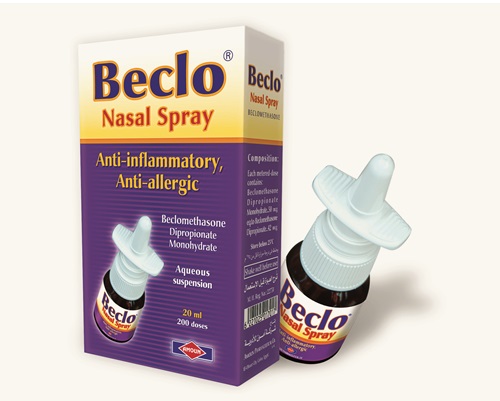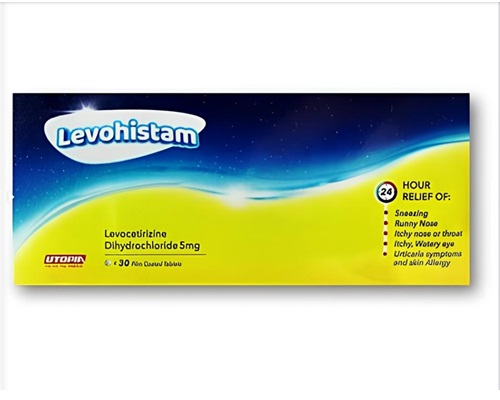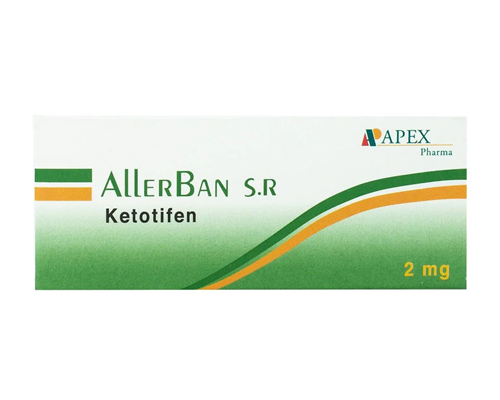Description
Trade name:
Norhinose
Composition:
Each dose of spray contains:
Mometasone furoate monohydrate 0.052 mg, which corresponds to the content of mometasone furoate 0.05 mg
Excipients:
Microcrystalline cellulose, sodium carmellose, glycerin, benzalkonium chloride, polysorbate 80, citric acid monohydrate, sodium citrate dihydrate, water for injection.
Properties:
GCS for intranasal use. Has anti-inflammatory and anti-allergic effect.
The mechanism of anti-allergic and anti-inflammatory action is due to the ability to inhibit the release of inflammatory mediators. Increases the production of lipomodulin, which is an inhibitor of phospholipase A, which causes a decrease in the release of arachidonic acid and, accordingly, inhibition of the synthesis of arachidonic acid metabolism products – cyclic endoperoxides, prostaglandins.
Indications:
-Treatment of seasonal and year-round allergic rhinitis in adults, adolescents and children from 6 years of age;
-Acute sinusitis or exacerbation of chronic sinusitis in adults (including the elderly) and adolescents from 12 years of age (as an adjuvant therapeutic agent in antibiotic treatment);
-Acute rhinosinusitis with mild to moderate symptoms without signs of severe bacterial infection in patients aged 12 years and older;
-Prevention of moderate to severe seasonal allergic rhinitis in adults and adolescents from 12 years of age;
– nasal polyposis, accompanied by impaired nasal breathing and olfactory function in adults (use after 18 years).
Method of administration and dosage:
Before using the first dose, shake the bottle well and press the spray pump 10 times (until a homogeneous spray is obtained).
Treatment of seasonal or year-round allergic rhinitis: for adults (including the elderly) and children over 12 years of age, the recommended prophylactic and therapeutic dose of the drug is 2 sprays (50 mcg each) in each nasal passage once a day (total daily dose – 200 mcg). After achieving the therapeutic effect, for maintenance therapy, it is advisable to reduce the dose to 1 spray in each nasal passage once a day (total daily dose – 100 mcg).
If the symptoms of the disease cannot be reduced by using the drug in the recommended therapeutic dose, the daily dose can be increased to the maximum: 4 sprays in each nasal passage once a day (total daily dose – 400 mcg). After the symptoms of the disease have reduced, it is recommended to reduce the dose.
For children aged 6-11 years, the recommended therapeutic dose is 1 spray (50 mcg) in each nasal passage once a day (total daily dose – 100 mcg).
Contraindications:
Hypersensitivity to the active substance or any inactive component of the drug. The drug should not be used in the presence of untreated localized infection involving the nasal mucosa. Due to the fact that GCS have the ability to suppress wound healing, patients who have recently had surgery on the nasal cavity or have had injuries should not use nasal GCS until healing occurs.
Precautions:
The drug should not be used in the presence of untreated local infection involving the nasal mucosa.
Patients using GCS may be potentially immunosuppressed and should be warned of the increased risk of infection when in contact with individuals with certain infectious diseases (such as chickenpox, measles), and of the need to consult a doctor if such contact occurs.
Side effects:
Infections and infestations: common – pharyngitis, upper respiratory tract infections.
Immune system disorders: unknown – hypersensitivity, including anaphylactic reactions, angioedema, bronchospasm and dyspnea.
Nervous system disorders: common – headache.
Visual disorders: unknown – glaucoma, increased intraocular pressure, cataract, blurred vision.
Respiratory, thoracic and mediastinal disorders: very common – nosebleed; often – nosebleed, burning sensation of the nasal mucosa, irritation of the nasal mucosa, ulceration of the nasal mucosa; unknown – perforation of the nasal septum.
From the gastrointestinal tract: often – irritation in the throat; unknown – taste and smell disturbances.
Storage method:
Store at a temperature not exceeding 30 degrees.
Packaging:
A cardboard box contains a glass bottle of 120 doses, paper instructions.









